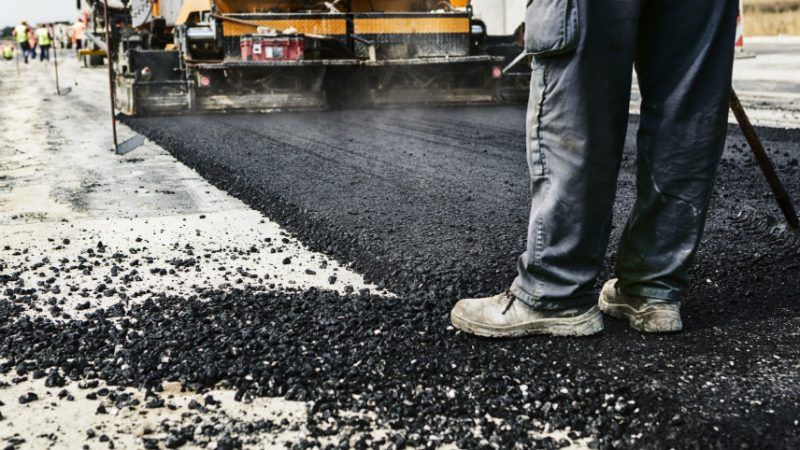Trump Infrastructure Plan: Privatization, Deregulation, and Spending
The plan would see $200 billion in new federal spending, but it would also open up opportunities for private infrastructure investment.


It's finally here. After a year of delays, drafts, outlines, and leaks, the Trump administration has released a detailed $1.5 trillion infrastructure proposal.
The 55-page document conforms largely to previous reports of what the package might look like. On the downside, there is a lot of new federal spending here. On the upside, there is an effort to shift a lot of the financing burden for new projects onto states, localities, individual users, and private investors, to streamline regulations on those new projects, and to make it easier to privatize existing federal assets.
In a statement, the president expressed his desire to work with Congress on a law that "will enable America's builders to construct new, modern, and efficient infrastructure throughout our beautiful land."
His infrastructure plan purports to do this by spending $200 billion in direct federal dollars in order to spur an additional $1.3 trillion in investment from non-federal sources.
Half of that federal money—$100 billion—will be allotted over 10 years to projects bringing non-federal revenue sources to bear for capital construction and maintenance. Federal funds would be limited to 20 percent of overall project costs, and could be clawed back if a project falls behind schedule or fails to live up to certain promises.
"It's a pilot program in effect, trying to get states and localities to come forward with innovative financing ways to do some important, major, well-justified projects," says Bob Poole, transportation policy director at the Reason Foundation (the nonprofit which publishes this website).
The proposal would also shift some infrastructure financing to user fees. Federal restrictions on tolling would be largely repealed, allowing states both to toll existing interstates and to spend that money on a wider array of highway projects. The plan would also make it easier for smaller hub airports to impose "passenger facility charges" on travelers, opening up a new stream of user fees to pay for maintaining and expanding aviation infrastructure.
To speed up infrastructure projects, the legislation would enact a "One Agency, One Decision" environmental review structure. A lead agency would conduct environmental reviews of projects, and the government would face a two-year deadline for to complete the review and permitting process.
Projects would also be allowed to get a jumpstart on some prep work—moving utility lines and purchasing rights of way—before the permitting process is complete.
More radical are the proposal's privatization provisions, which could diminish the current federal involvement in infrastructure.
The administration suggests allowing federal agencies to sell off assets that would be more efficiently owned and operated by the private sector. The possible examples listed include Reagan and Dulles airports in the D.C. metro area, and also the power transmission assets of the Tennessee Valley Authority.
Airports' ability to privatize on their own initiative would also be streamlined. Private Activity Bonds—tax-exempt bonds issued by private sponsors to raise capital for infrastructure projects—would likewise be expanded.
Not all of the plan would reduce the federal government's role. Much of the other $100 billion in direct federal funding would go to traditional infrastructure pork. Some $50 billion would be doled out to states, tribes, and territories to spend on mostly unnecessary rural projects—perhaps even broadband internet.
Another $20 billion would go a "Transformative Projects Program" that would "fundamentally transform how infrastructure is delivered or operated." Federal funds could pay for as much as 80 percent of these projects' construction costs, putting taxpayers on the hook for any number of risky ventures.
These provisions are likely necessary to buy political support for a program that is already facing criticism for not spending enough money.
Paul Krugman, an economist and New York Times columnist, is calling the proposal a "scam" that will bring almost no new investment while giving away the nation's infrastructure to corporate fat cats. Congressional Democrats have echoed the critique. Rep. Peter DeFazio (D-Ore.), the ranking Democrat on the transportation committee, said, "President Trump cannot pretend to solve our infrastructure woes by slashing real investments to States and local governments, pushing the responsibility off Federal balance sheets, cutting existing transportation programs to pay for Wall Street and foreign investors to toll our roads, and gutting bedrock environmental protections,"
DeFazio, along other House Democrats, have unveiled a $1 trillion proposal composed entirely of federal funding.
On the flipside, small-government advocates—such as the Cato Institute's Chris Edwards—argue that there should be no new federal subsidies to infrastructure, and that many of the incentives included in Trump's plan would only layer more bureaucracy on projects.
Poole sees the new federal funding as a compromise allowing the proposal's more market-oriented reforms to go forward. "It's decentralist in some ways," he says. "There are a lot of things that move the needle in the right direction."
